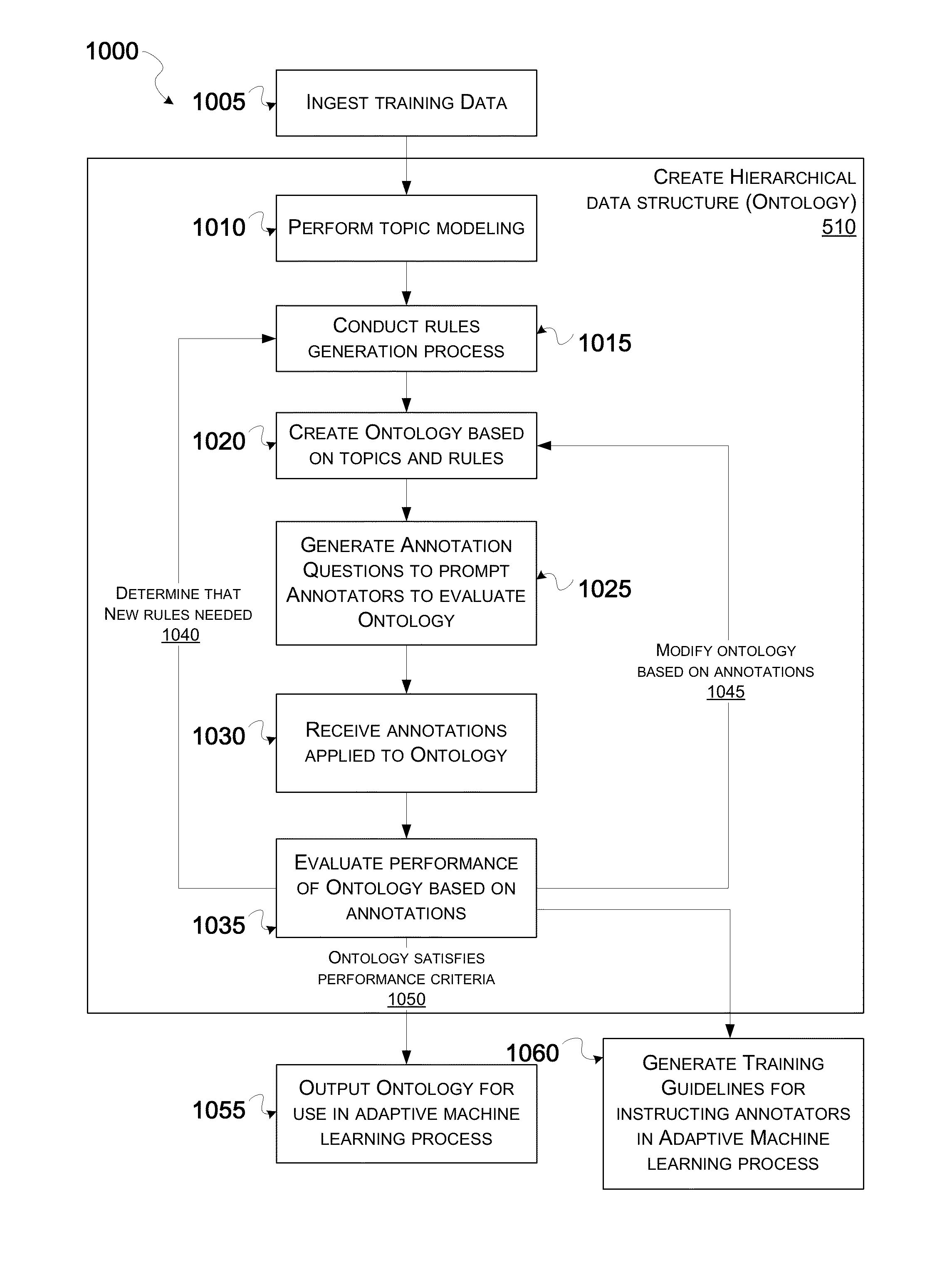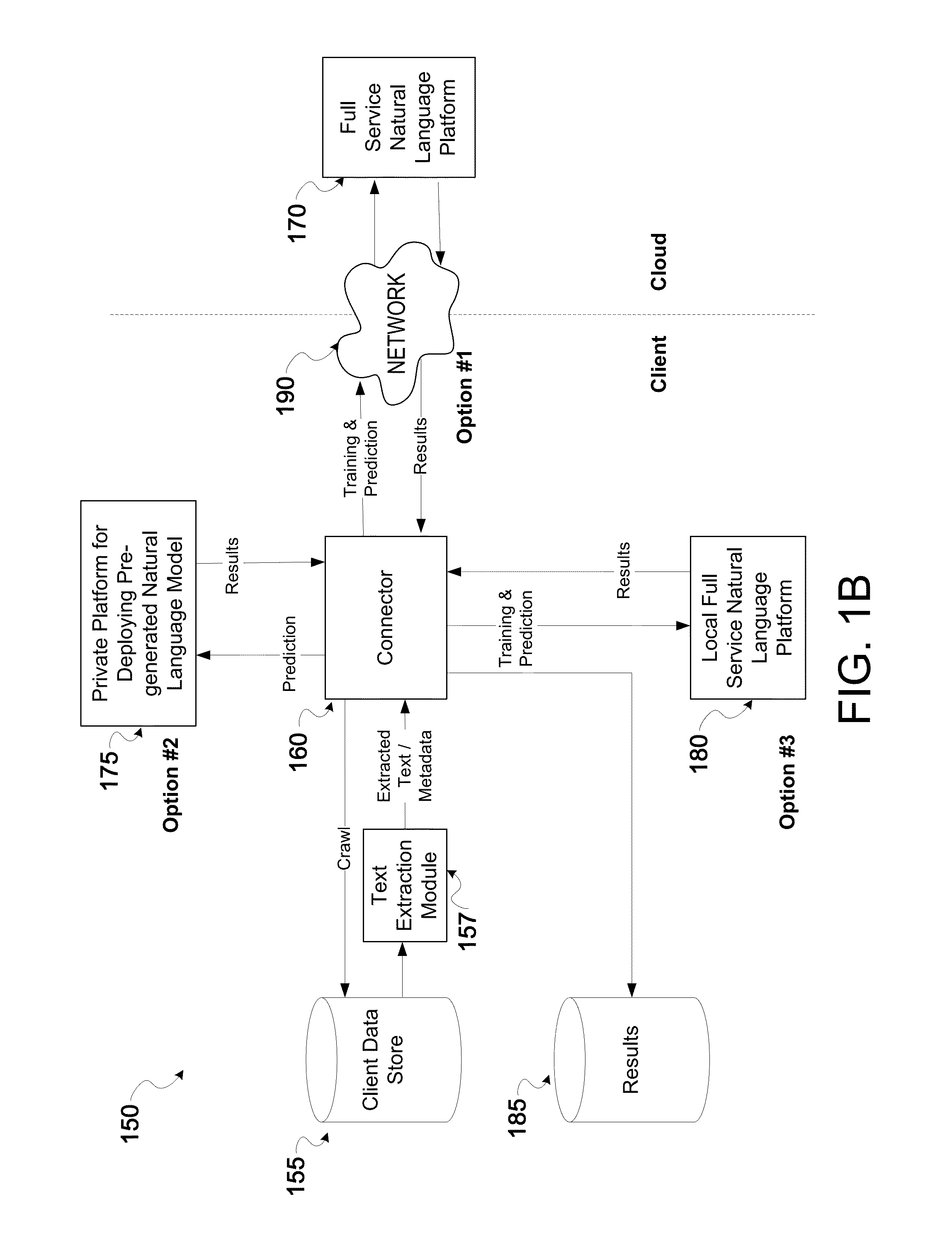Methods for generating natural language processing systems
a natural language processing and model technology, applied in the field of processing data, can solve the problems of inability to program computers to process human-readable language, inability to accurately and accurately predict the process of human-readable language, and difficulty in generating the model, etc., and achieve the effect of low degree of certainty
- Summary
- Abstract
- Description
- Claims
- Application Information
AI Technical Summary
Benefits of technology
Problems solved by technology
Method used
Image
Examples
Embodiment Construction
[0039]Example methods, apparatuses, and systems (e.g., machines) are presented for generating natural language models.
[0040]The modes of human communications brought upon by digital technologies have created a deluge of information that can be difficult for human readers to handle alone. Companies and research groups may want to determine trends in the human communications to determine what people generally care about for any particular topic, whether it be what car features are being most expressed on Twitter®, what political topics are being most expressed on Facebook®, what people are saying about the customer's latest product in their customer feedback page, what are the key categories written about in a large body of legal documents, and so forth. In some cases, the companies or the research groups may want to determine what are the general topics being talked about, to begin with. It may be desirable for companies to aggregate and then synthesize the thousands or even millions...
PUM
 Login to View More
Login to View More Abstract
Description
Claims
Application Information
 Login to View More
Login to View More - R&D
- Intellectual Property
- Life Sciences
- Materials
- Tech Scout
- Unparalleled Data Quality
- Higher Quality Content
- 60% Fewer Hallucinations
Browse by: Latest US Patents, China's latest patents, Technical Efficacy Thesaurus, Application Domain, Technology Topic, Popular Technical Reports.
© 2025 PatSnap. All rights reserved.Legal|Privacy policy|Modern Slavery Act Transparency Statement|Sitemap|About US| Contact US: help@patsnap.com



